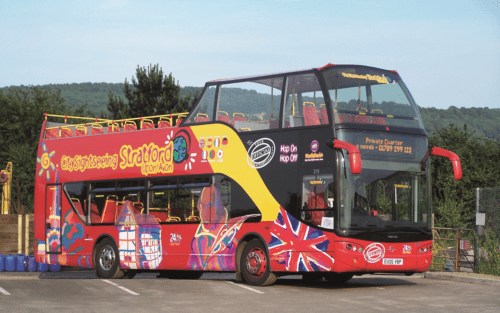
Over two decades ago, Ensignbus embarked on an expansion programme that involved the rapid roll-out of a new open-top tour brand and its blue and silver livery expanding beyond Essex. Richard Sharman takes a light-hearted look back on his time at the firm’s Stratford-upon-Avon depot
It is rare that the bus industry manages to go 365 days without experiencing some moments that come completely out of the blue. It has had a few shocking moments and the passing of the Newman family’s admired Ensignbus operation to First Bus was pretty much near the top of the list!
At the time of the announcement I was still at the helm of this great industry publication and made one call to secure an interview with Peter Newman on that very afternoon back in March. I made the 4-hour drive straight down to Purfleet as the deal was unfolding; Ross and Steve Newman were rushing around getting everything in place and Peter Newman kindly found time to talk to me, in the process introducing me to Piers Marlow, Managing Director of First Essex. During our conversation Peter took me through the reasons for the sale, which were well documented in these pages at the time.
Watershed moment
For those of you who have been in the industry many years – or followed them as an enthusiast – during the many years that Ensignbus had been going, it was a watershed moment for the industry. Although Ensignbus has of course carried on under First Bus ownership, it will never be quite the same without the Newmans at the helm.
[…]By subscribing you will benefit from:
- Operator & Supplier Profiles
- Face-to-Face Interviews
- Lastest News
- Test Drives and Reviews
- Legal Updates
- Route Focus
- Industry Insider Opinions
- Passenger Perspective
- Vehicle Launches
- and much more!


